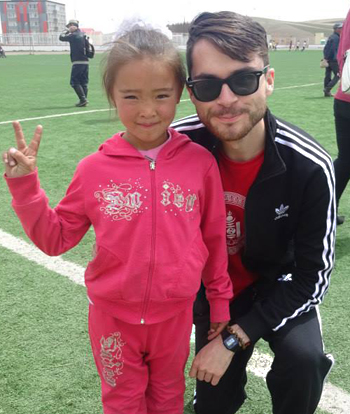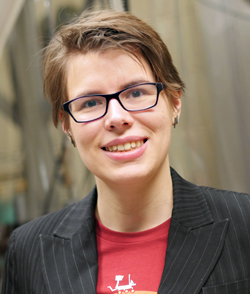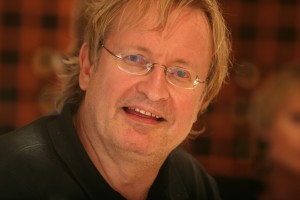
Kalamazoo College ranks 14th among small colleges and universities nationwide in terms of the number of graduates who volunteer to serve in the Peace Corps. Since the agency was created in 1961, 288 K graduates have served overseas. Currently, nine K alumni are serving worldwide. One of them is William Schlaack ’12, who has served in Mongolia as an education volunteer since 2014 (see interview below). William majored in German and religion. He participated in the Farms 2K student organization, worked for K’s library and studied abroad in Erlangen, Germany.
Two other Michigan school received recognition on the large school list. University of Michigan ranked sixth (48 volunteers) and Michigan State University ranks 22nd (33 volunteers).
Kalamazoo College is no stranger to the Peace Corps. In 2006, it ranked as the eighth top volunteer-producing school among small universities and colleges. One of the most moving stories about the Peace Corps experience is shared by alumnus David Easterbrook ’69. You can hear him tell it (“When You See Rose Kennedy in the Market“) on Story Zoo.
What are your main volunteer projects and secondary projects?
(William Schlaack) I teach at the Mongolian University of Science and Technology in Darkhan aimag (province). Most of my time is spent co-teaching, lesson and curriculum building and leading extracurricular activities such as English club, teacher’s club and hiking club.
For secondary projects, I’ve been working with local non-governmental organizations and schools on regional Special Olympics competitions. So far two regions have held their first ever events. One other project I have been working on is life skills classes at the regional prison, so far I’ve been able to give workshops on anger and stress management that have been highly rewarding.
Outside of planned projects I think one of the best aspects of Peace Corps is the daily cultural exchange that takes place between volunteers and host country nationals. These interactions go beyond projects and really build great friendships and foster understanding between cultures.
How did your alma mater help prepare you for international service, or lead you to Peace Corps?
(WS) Kalamazoo provides wonderful study abroad and service learning opportunities that really help shape a global perspective that’s oriented toward service on a local and global scale.
What/who inspired me to serve in the Peace Corps?
(WS) I became inspired to serve in the Peace Corps as a result of volunteering with Books to Prisoners (a program that provides free books to Illinois inmates and also helps operate two jail libraries in the Urbana-Champaign area) and Project READ (an adult ESL program run out of Parkland Community College in Champaign, Illinois). I wanted to take some time off after earning my master’s degree to participate in some sort of national service that would combine international experience and allow me to leave a positive impact on a new community.
What are your career aspirations?
(WS) After Peace Corps I plan on working in a library, but also continuing my volunteer work in whatever local community I wind up in. Peace Corps has strengthened my project management skills and given me unique problem solving experiences that I hope to bring to my future workplace and community.
What’s been your favorite part of service?
My favorite part of service has been serving and growing in a community so rich with tradition and culture which has given me the opportunity to experience so many amazing encounters and find common interests and passions. Day-to-day life is often so surprising and hardly a day goes by that I don’t learn more about myself and my community.













